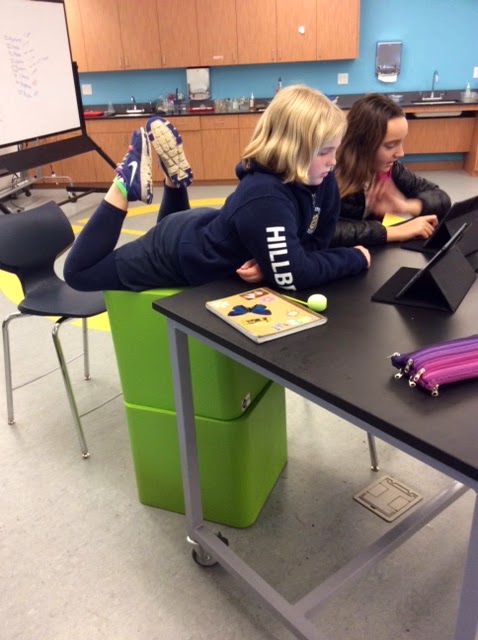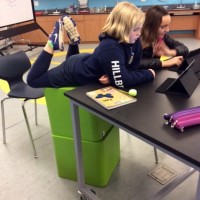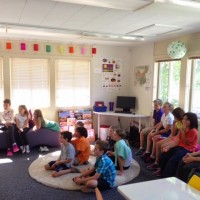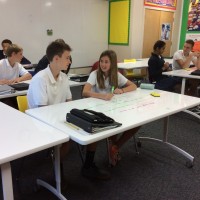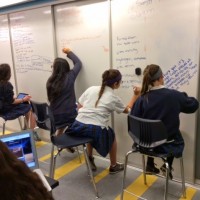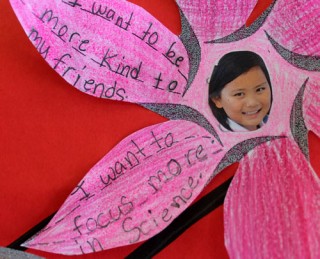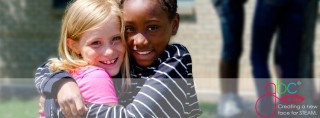Hillbrook School’s classrooms are changing and everyone has something to say about it. Eighth graders, believing their art studio was “too adult and too organized,” submitted a petition for its “re-messification.”
Last year, over a dozen teachers agreed to begin substantially altering their classrooms and then asked questions about how the changes—which included physical redesigns and reimagining their students’ role in setting up the classroom—have affected teaching and learning. Teachers can now make their own alterations—in different ways and at different times—allowing the school to observe the results of these transitions across grade levels.
There have been some interesting results. When whiteboard tables came to some lower school rooms, everyone became more comfortable taking a seat, or adding to someone else’s writing surface. Students were more likely to join brainstorming sessions, or take risks working out math practice problems.
New seating choices take into account students’ physical movements. Options include beanbags, chairs with wiggly seats, rocking stools, and sofa benches. Still to be determined: Can students take a quiz productively in a beanbag? Will giving students these kinds of options help them focus? Will it affect productivity and engagement, improve their experience taking tests, and lower their stress levels?
The classroom redesigns invite collaboration, inquiry, and reflection between students and teachers around optimal, individualized learning, says Ilsa Dohmen, a sixth grade science teacher and Hillbrook Center for Teaching Excellence Research Designer. “These conversations allow us to better meet our mission of valuing students as individuals and helping each one reach his/her highest individual potential.”
